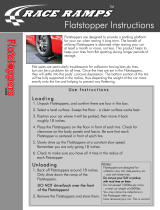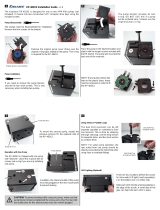
Introduction
7
Volvo and the environment
Volvo is committed to the well being of its
customers. As a natural part of this commit-
ment, we care about the environment in
which we all live. Caring for the environment
means an everyday involvement in reducing
our environmental impact. Volvo's environ-
mental activities are based on a holistic view,
which means we consider the overall envi-
ronmental impact of a product throughout its
complete life cycle. In this context, design,
production, product use, and recycling are all
important considerations. In production,
Volvo has partly or completely phased out
several chemicals including CFCs, lead chro-
mates, asbestos, and cadmium; and reduced
the number of chemicals used in our plants
50% since 1991.
Volvo was the first in the world to introduce
into production a three-way catalytic con-
verter with a Lambda sond, now called the
heated oxygen sensor, in 1976. The current
version of this highly efficient system reduces
emissions of harmful substances (CO, HC,
NOx) from the exhaust pipe by approximately
95-99% and the search to eliminate the
remaining emissions continues. Volvo is the
only automobile manufacturer to offer CFC-
free retrofit kits for the air conditioning sys-
tem of all models as far back as the 1975
model 240. Advanced electronic engine con-
trols and cleaner fuels are bringing us closer
to our goal. After Volvo vehicles and parts
have fulfilled their use, recycling is the next
critical step in completing the life cycle. The
metal content is about 75% of the total
weight of a vehicle, which makes the vehicle
among the most recycled industrial products.
In order to have efficient and well controlled
recycling, all Volvo variants have printed dis-
mantling manuals, indicating the weight and
material of individual components. For Volvo,
all homogeneous plastic parts weighing more
than 3.4 oz. (100 grams) are marked with
international symbols that indicate how the
component is to be sorted for recycling. In
addition to continuous environmental refine-
ment of conventional gasoline-powered
internal combustion engines, Volvo is
actively looking at advanced technology
alternative-fuel vehicles.
When you drive a Volvo, you become our
partner in the work to lessen the car's impact
on the environment. To reduce your vehicle's
environmental impact, you can:
• Maintain proper air pressure in your tires.
Tests have shown decreased fuel econ-
omy with improperly inflated tires.
• Follow the recommended maintenance
schedule in your Warranty and Service
Records Information booklet.
• Drive at a constant speed whenever possi-
ble.
• See a trained and qualified Volvo service
technician as soon as possible for inspec-
tion if the check engine (malfunction indi-
cator) light illuminates, or stays on after
the vehicle has started.
• Properly dispose of any vehicle-related
waste such as used motor oil, used batter-
ies, brake pads, etc.
• When cleaning your vehicle, please use
genuine Volvo car care products. All Volvo
car care products are formulated to be
environmentally friendly.
For additional information regarding the envi-
ronmental activities in which Volvo Cars of
North America, LLC and Volvo Car Corpora-
tion are involved, visit our Internet home
page at: http://www.volvocars.us.
WARNING
Certain components of this vehicle such as
air bag modules, seat belt pretensioners,
adaptive steering columns, rollover protec-
tion system, and button cell batteries may
contain Perchlorate material. Special han-
dling may apply for service or vehicle end of
life disposal.
See www.dtsc.ca.gov/hazardouswaste/
perchlorate.
























